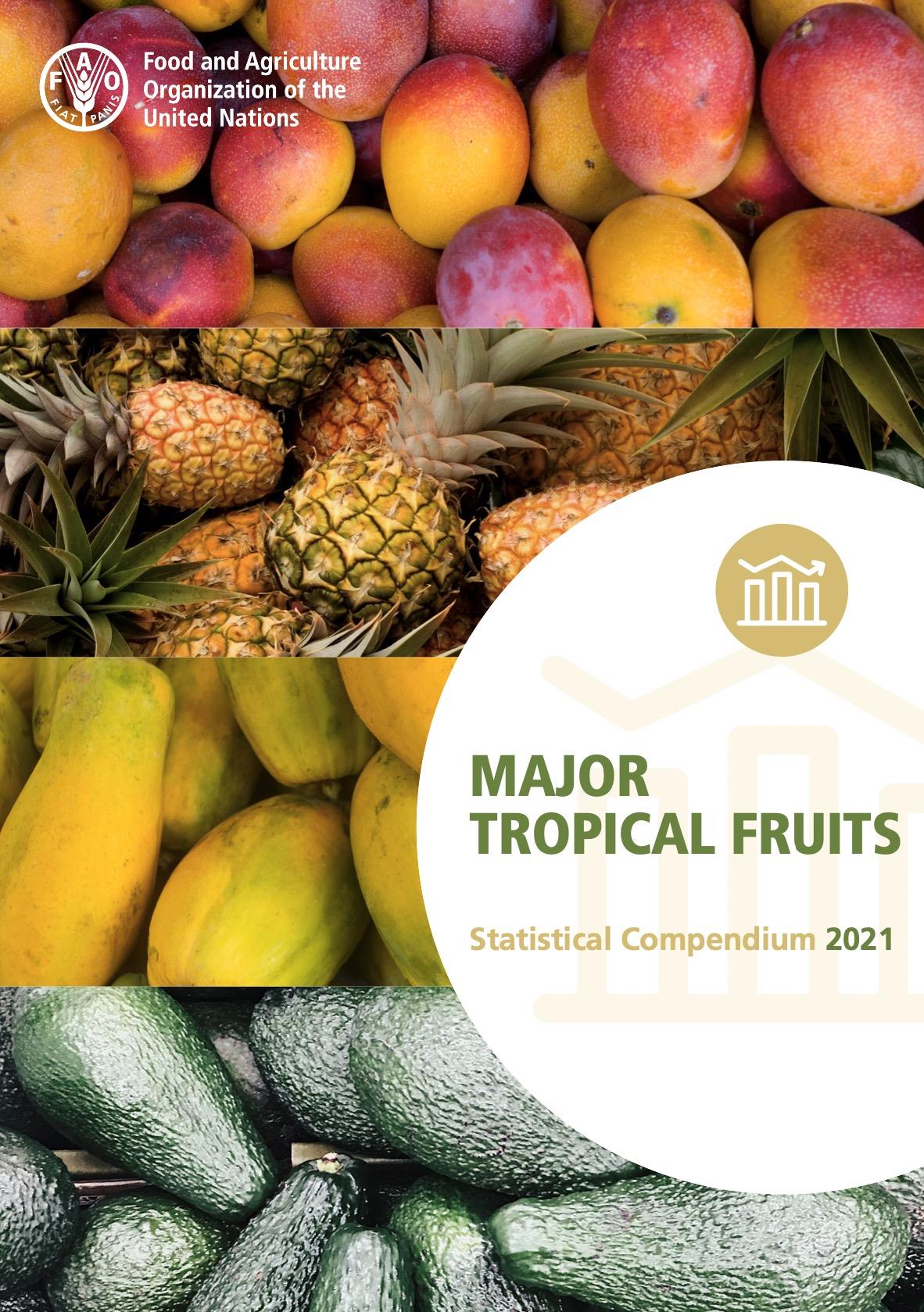
Major Tropical Fruits - Statistical Compendium 2021
11/10/2022
The Major Tropical Fruits Statistical Compendium is issued on an annual basis to Members and Observers of the Sub-Group on Tropical Fruits of the Intergovernmental Group on Bananas and Tropical Fruits, which is a subsidiary body of the Committee on Commodity Problems (CCP).
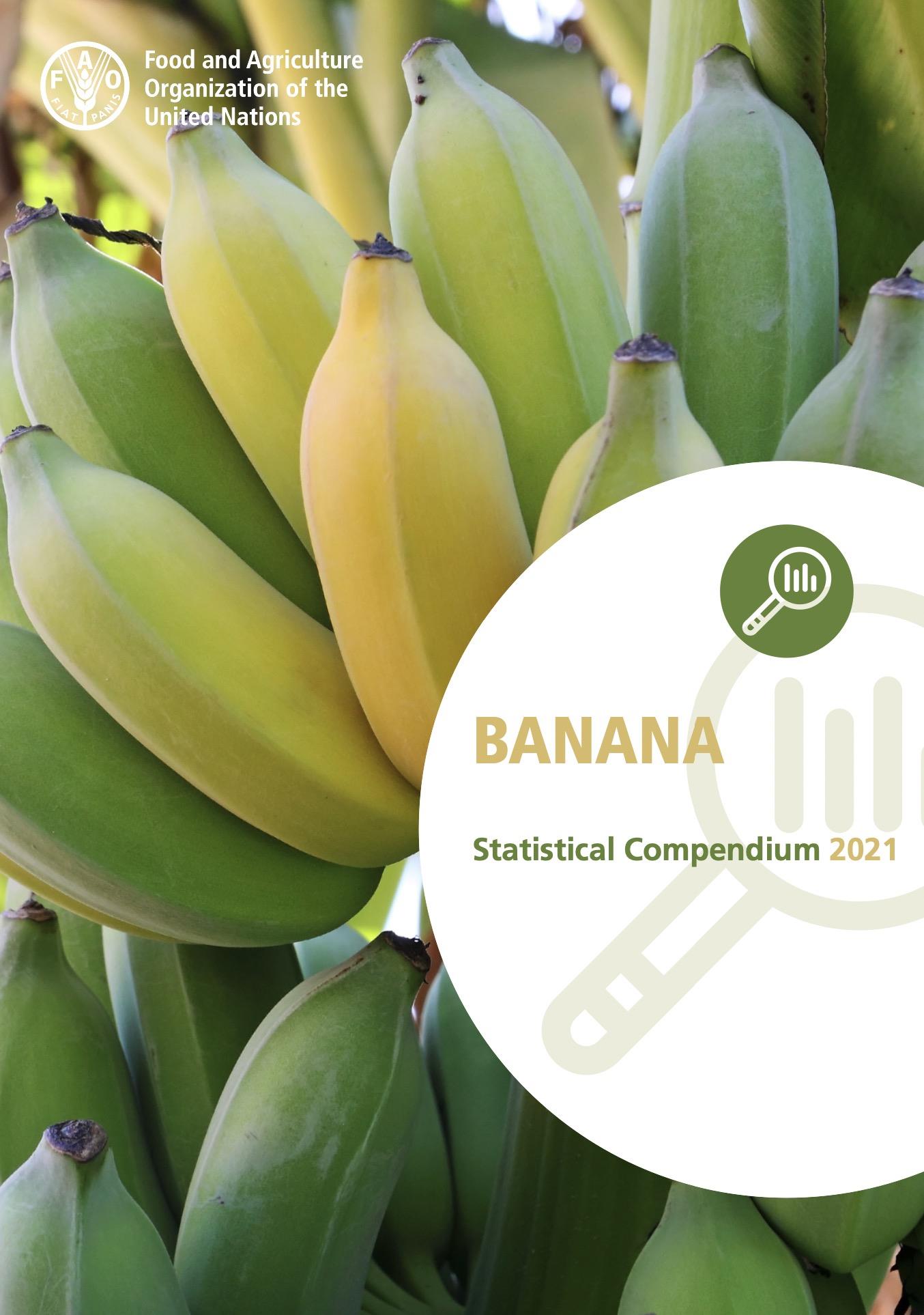
Banana Statistical Compendium 2021
11/10/2022
The Banana Statistical Compendium is issued on an annual basis to Members and Observers of the Sub-Group on Bananas of the Intergovernmental Group on Bananas and Tropical Fruits, which is a subsidiary body of the Committee on Commodity Problems (CCP).
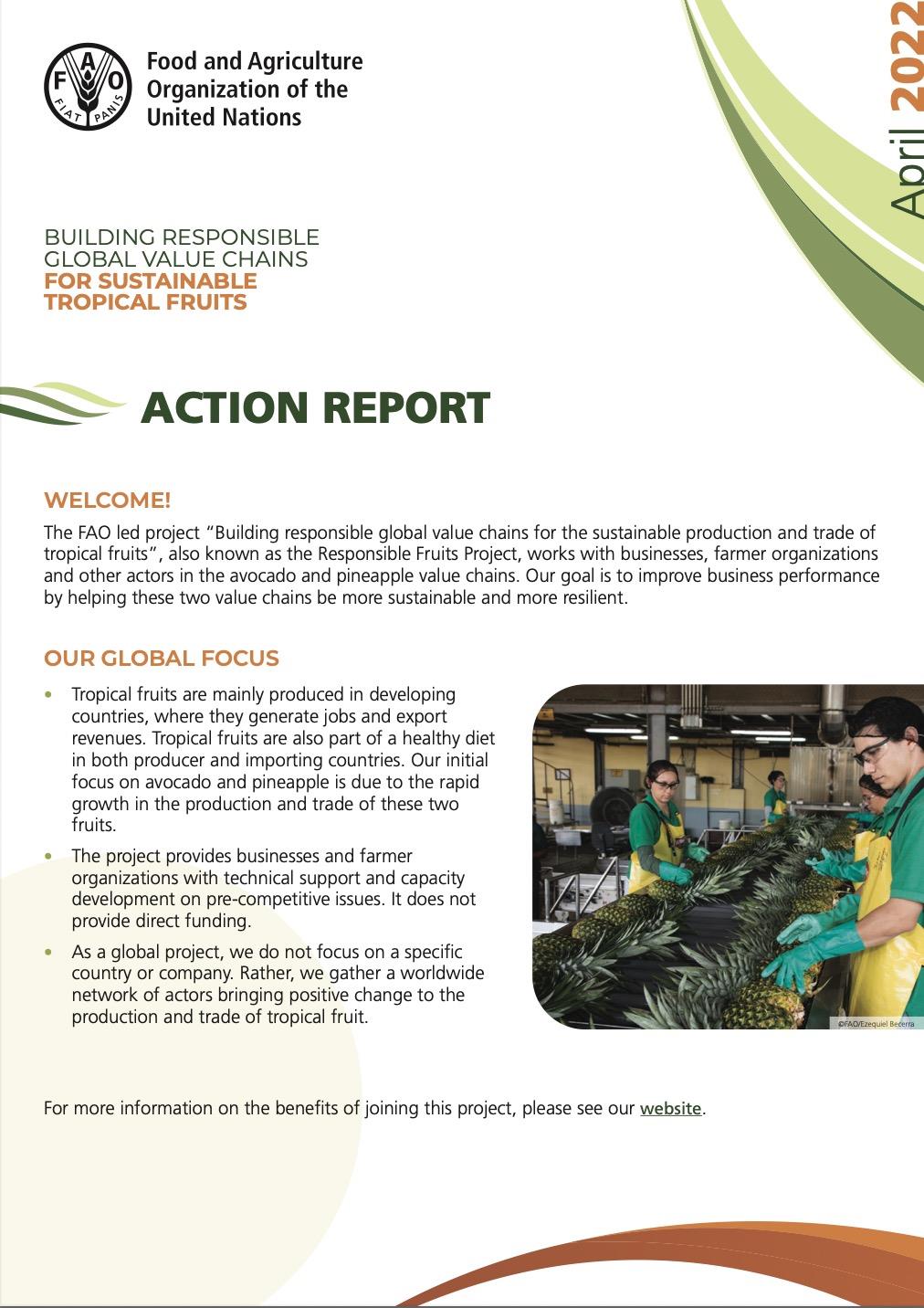
Action Report April 2022: Responsible Tropical Fruits Project
10/10/2022
The FAO led project “Building responsible global value chains for the sustainable production and trade of tropical fruits” works with businesses, farmer organizations and other actors in the avocado and pineapple value chains. Our goal is to improve business performance by helping these two value chains be more sustainable and more resilient. The Action Report series provide periodic updates of the project’s activities. This report was published in April 2022.
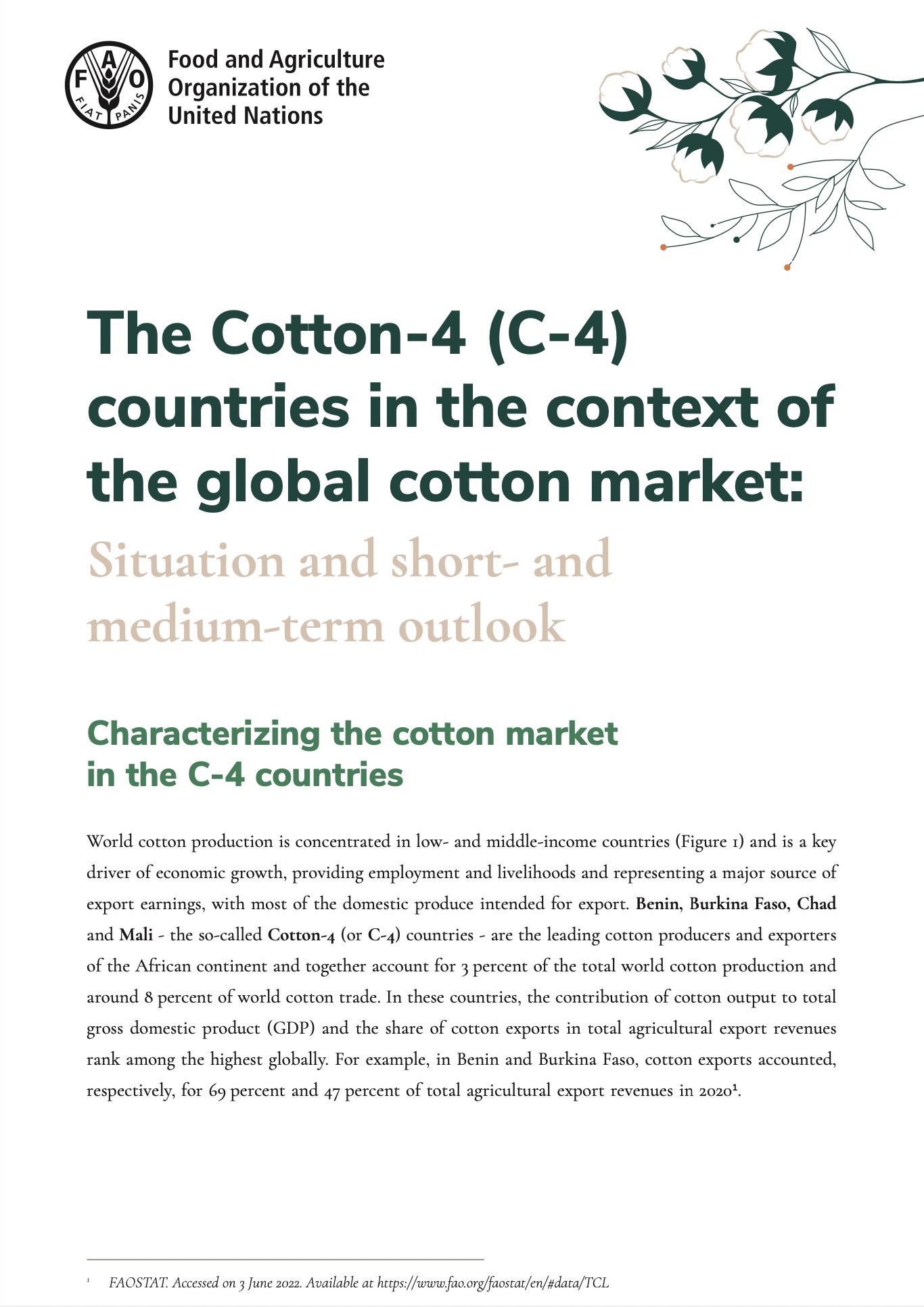
The Cotton-4 (C-4) countries in the context of the global cotton market: Situation and short- and medium-term outlook
05/10/2022
This document analyses the cotton market in the Cotton-4 (C-4) countries, Benin, Burkina Faso, Chad and Mali. It studies the current market situation and medium-term prospects of the sector and considers the way forward.
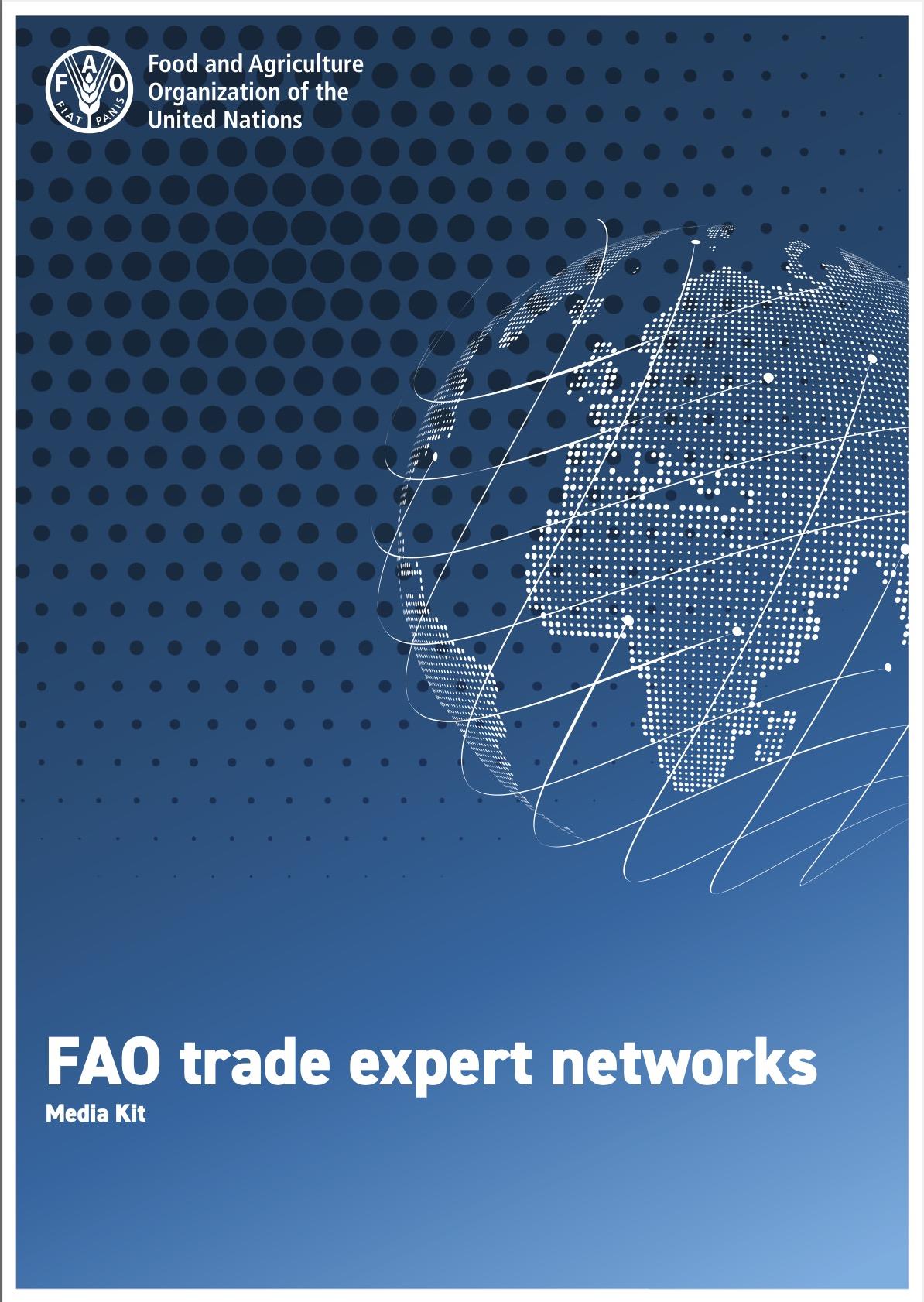
FAO trade expert networks - Media Kit
03/10/2022
The Food and Agriculture Organization (FAO) supports regional ‘trade expert networks’ that provide neutral and independent platforms for the exchange of knowledge and experience on agrifood trade issues. Experts include government trade officials, researchers from academia, and professionals from industry associations—specialists who conduct policy-relevant analysis, carry out training programmes, and advise government and the private sector on issues related to agrifood trade and trade policy. Currently, three networks are active in Eastern Europe, Caucasus and Central Asia (EECCA), Sub- Saharan Africa, and Near East and North Africa (NENA). This media kit introduces each of the three expert networks, including highlights of recent work and ways to get in touch.
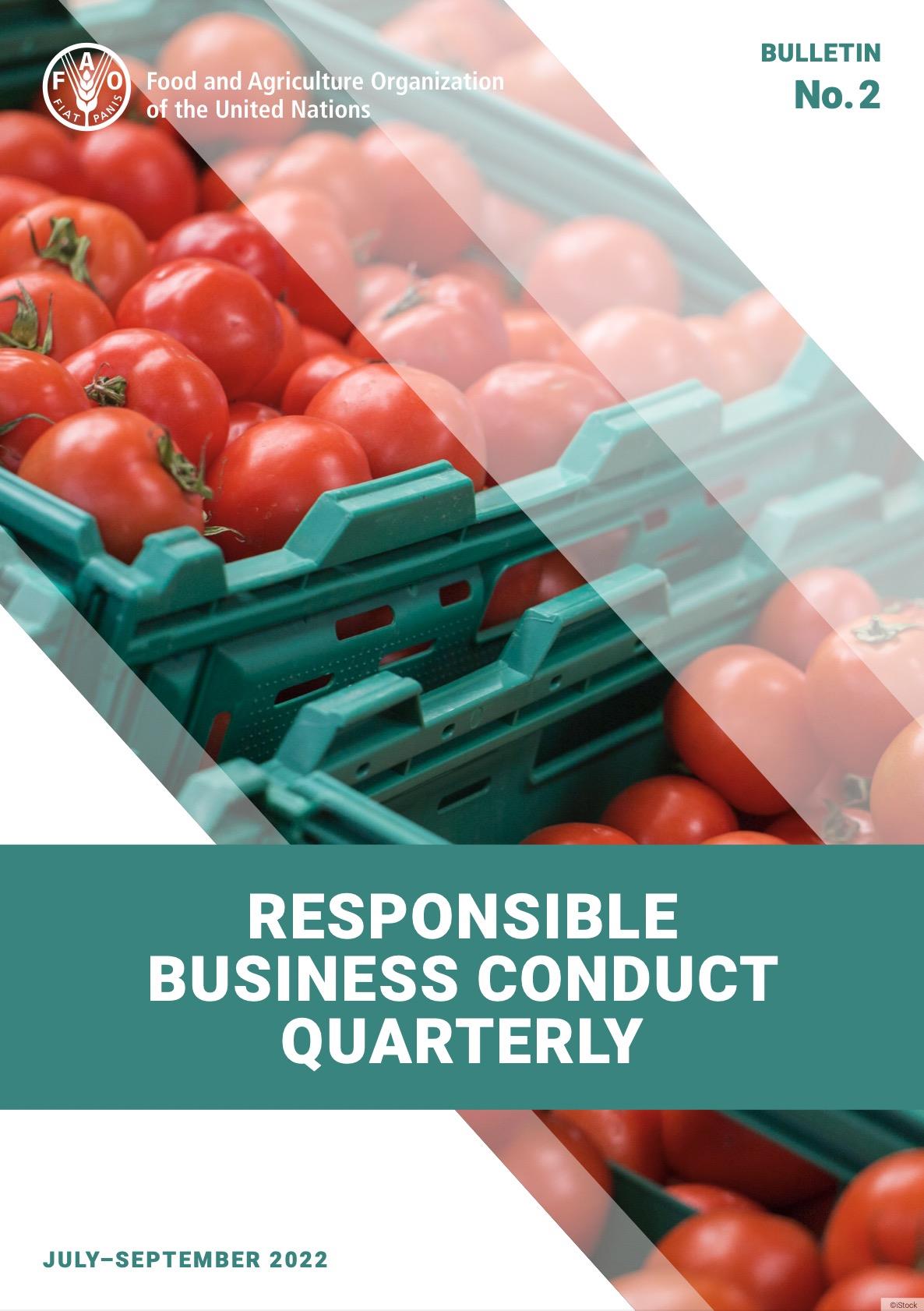
Responsible Business Conduct Quarterly - Bulletin No. 2, July - September 2022
30/09/2022
FAO’s Responsible Business Conduct Quarterly Bulletin (RBC-Q) shares events and resources on FAO’s activities on Responsible Global Value Chains and news from around the world related to business, risk and development in the agricultural sector. It is prepared by FAO’s Markets and Trade Division (EST). This issue of the bulletin covers the period July–September 2022.
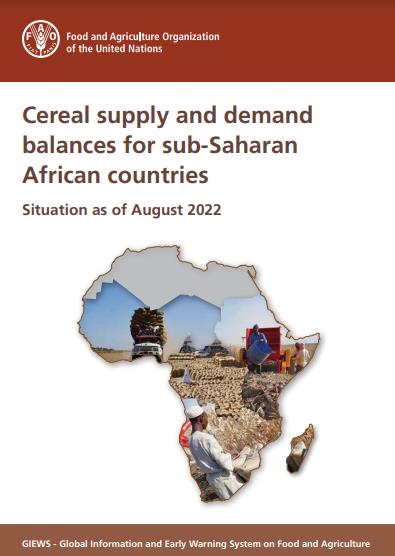
Cereal supply and demand balances for sub-Saharan African countries No. 3, September 2022
30/09/2022
This statistical report contains a subset of cereal country balance sheets (CCBS) data and presents updated cereal supply and demand balances for all sub-Saharan African countries. It complements the information of the FAO/GIEWS Crop Prospects and Food Situation report and is published four times a year with the same schedule. This report is based on information available as of August 2022.
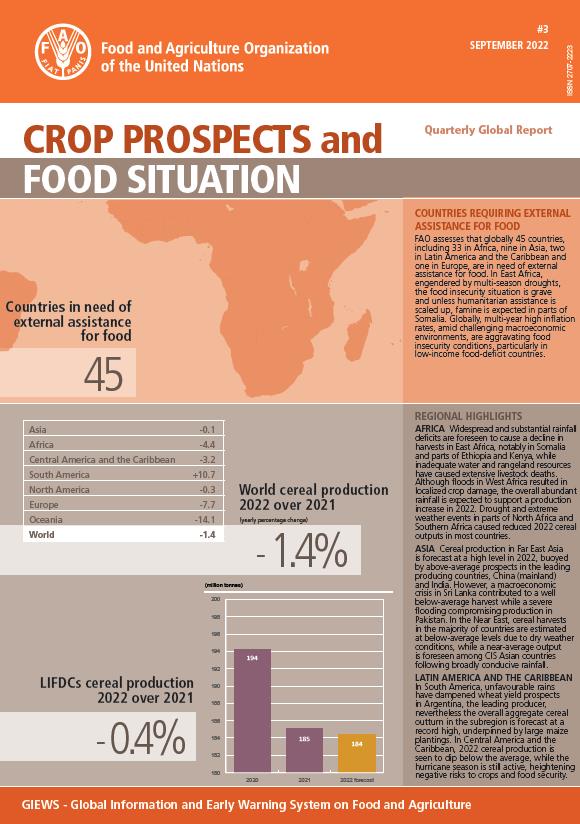
Crop Prospects and Food Situation - Quarterly Global Report, No. 3, September 2022
30/09/2022
FAO assesses that globally 45 countries, including 33 in Africa, nine in Asia, two in Latin America and the Caribbean and one in Europe, are in need of external assistance for food. In East Africa, engendered by multi-season droughts, the food insecurity situation is grave and unless humanitarian assistance is scaled up, famine is expected in parts of Somalia.
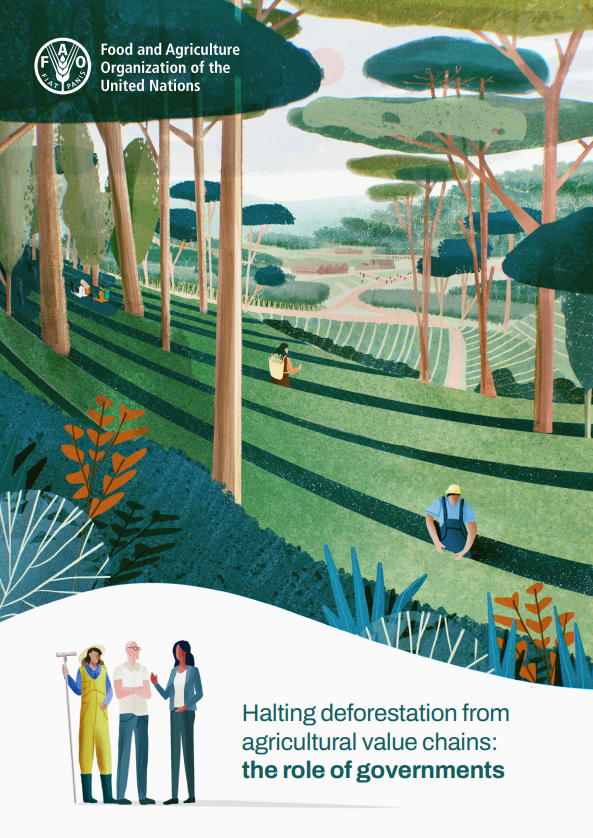
Halting deforestation from agricultural value chains: the role of governments
29/09/2022
This paper summarizes the current state of concepts and approaches for addressing deforestation in the trade, marketing, and production of agricultural commodities that have a disproportionate impact on forests at international, national, and landscape level. To date, predominant attention has been directed towards the role of the private sector and "consumer countries" that shape market regulation.
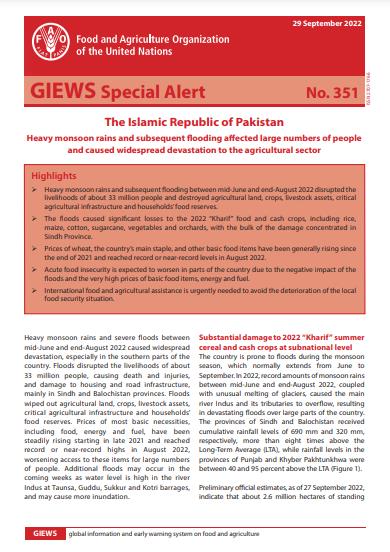
GIEWS Special Alert No. 351 - The Islamic Republic of Pakistan, 29 September 2022
29/09/2022
Heavy monsoon rains and subsequent flooding between mid-June and end-August 2022 disrupted the livelihoods of about 33 million people and destroyed agricultural land, crops, livestock assets, critical agricultural infrastructure and households’ food reserves. The floods caused significant losses to the 2022 “Kharif” food and cash crops, including rice, maize, cotton, sugarcane, vegetables and orchards, with the bulk of the damage concentrated in Sindh Province. Prices of wheat, the country’s main staple, and other basic food items have been generally rising since the end of 2021 and reached record or near-record levels in August 2022. Acute food insecurity is expected to worsen in parts of the country due to the negative impact of the floods and the very high prices of basic food items, energy and fuel. International food and agricultural assistance is urgently needed to avoid the deterioration of the local food security situation.
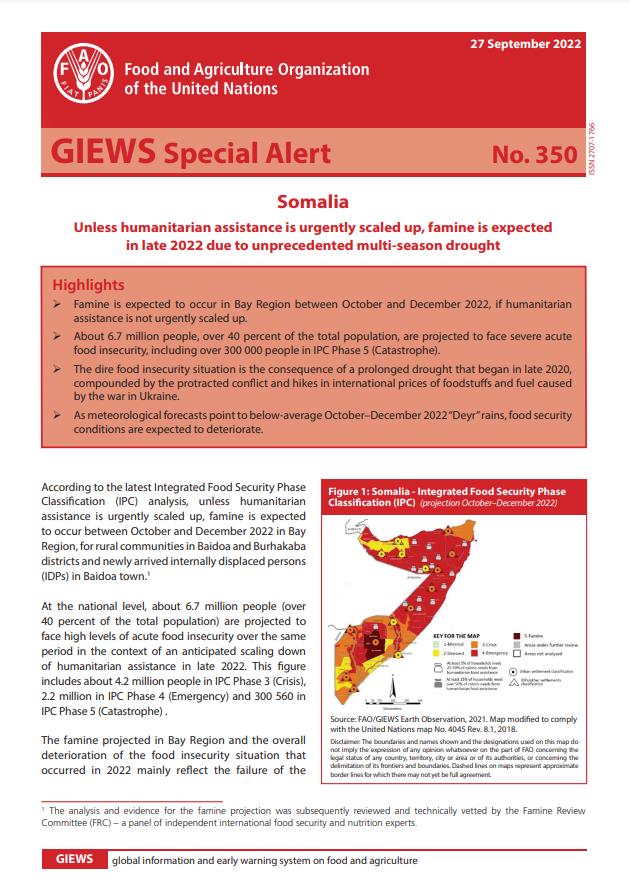
GIEWS Special Alert No. 350 - Somalia, 27 September 2022
27/09/2022
Famine is expected to occur in Bay Region between October and December 2022, if humanitarian assistance is not urgently scaled up. About 6.7 million people, over 40 percent of the total population, are projected to face severe acute food insecurity, including over 300 000 people in IPC Phase 5 (Catastrophe). The dire food insecurity situation is the consequence of a prolonged drought that began in late 2020, compounded by the protracted conflict and hikes in international prices of foodstuffs and fuel caused by the war in Ukraine. As meteorological forecasts point to below-average October–December 2022 “Deyr” rains, food security conditions are expected to deteriorate.

Webinar #7: Adapting to climate change – what does this mean for the pineapple and avocado industry? 22 June 2022
27/09/2022
This was the seventh in a series of technical webinars being organized by FAO’s Responsible Fruits project in response to the priorities and interests of participants from the private sector. The webinars will provide an opportunity for peer learning on precompetitive issues, and the identification and sharing of good practices
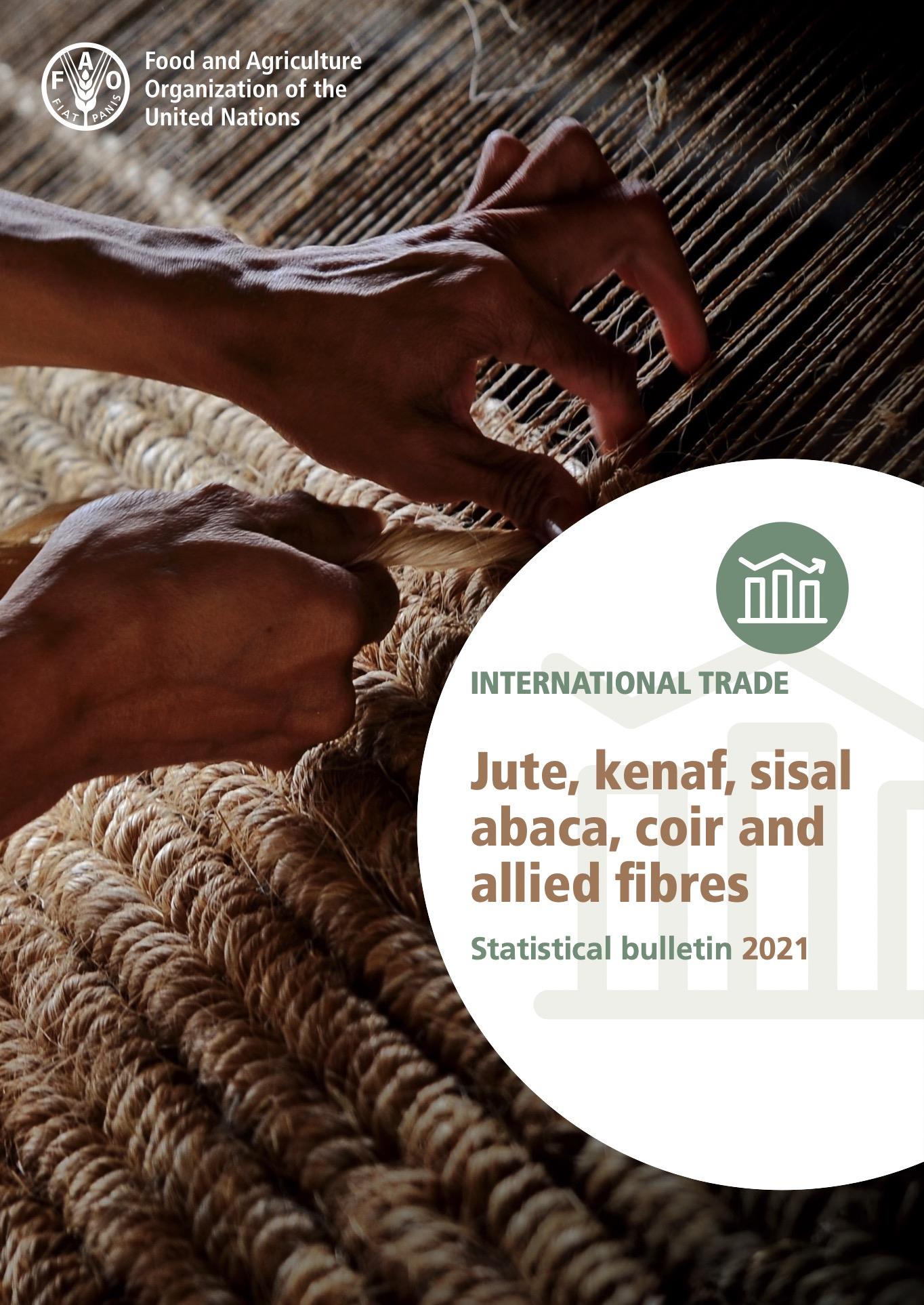
Jute, kenaf, sisal abaca, coir and allied fibres Statistical bulletin 2021
26/09/2022
The Market and Policy Analysis of Raw Materials, Horticulture and Tropical Products Team (RAMHOT), provides economic data and analysis on major agricultural raw materials and tropical products, including hard fibres (abaca, coir and sisal), jute, kenaf and allied fibres. The tables contained in this document bring together governments’ replies to the latest questionnaires, supplemented by other data available to the Secretariat at 31 December 2021.
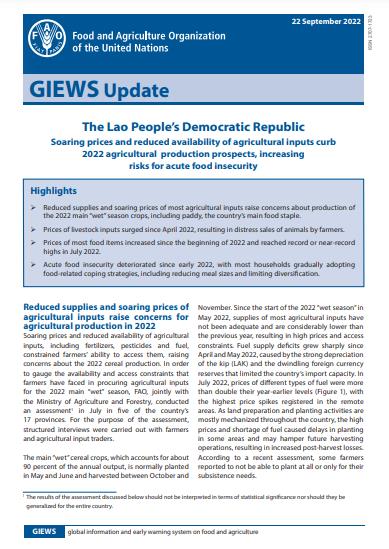
GIEWS Update - The Lao People’s Democratic Republic
22/09/2022
Reduced supplies and soaring prices of most agricultural inputs raise concerns about production of the 2022 main “wet” season crops, including paddy, the country’s main food staple. Prices of livestock inputs surged since April 2022, resulting in distress sales of animals by farmers. Prices of most food items increased since the beginning of 2022 and reached record or near‑record highs in July 2022. Acute food insecurity deteriorated since early 2022, with most households gradually adopting food‑related coping strategies, including reducing meal sizes and limiting diversification.
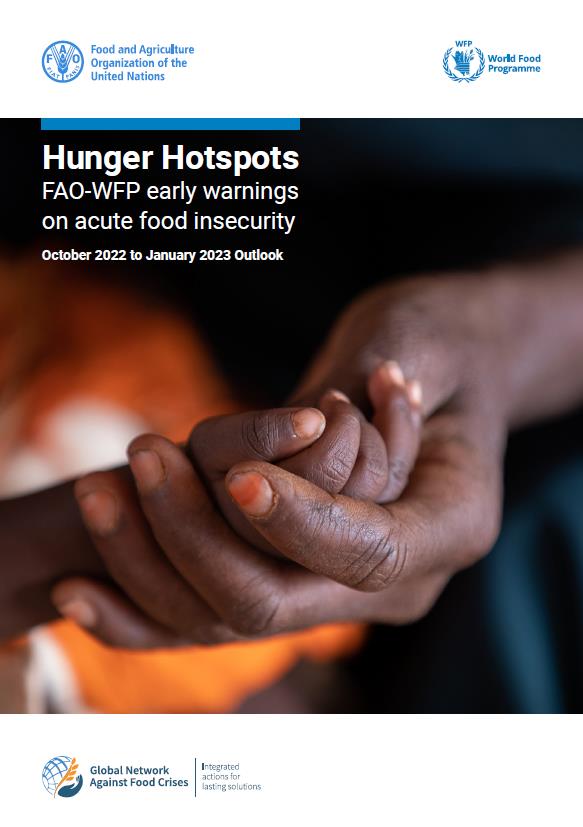
Hunger Hotspots - FAO-WFP early warnings on acute food insecurity: October 2022 to January 2023 Outlook
21/09/2022
The Food and Agriculture Organization of the United Nations (FAO) and the World Food Programme (WFP) warn that acute food insecurity is likely to deteriorate further in 19 countries or situations – called hunger hotspots – during the outlook period from October 2022 to January 2023.
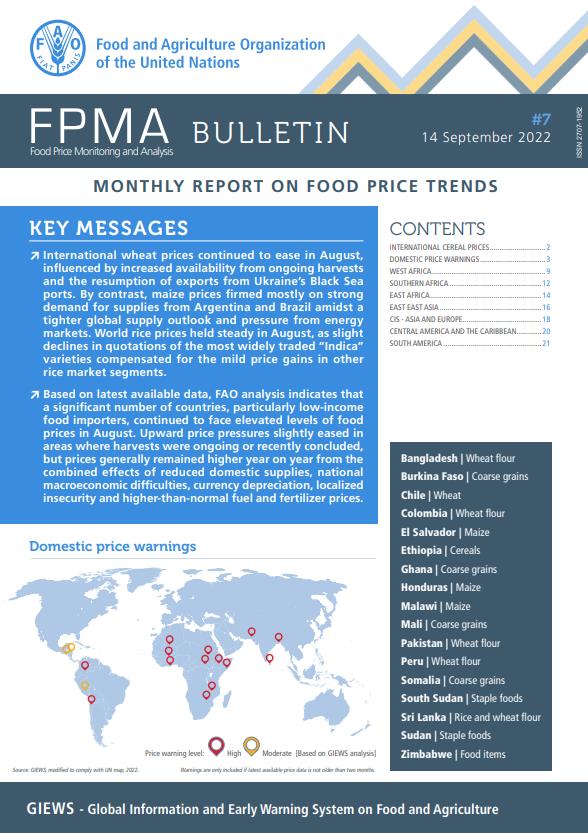
Food Price Monitoring and Analysis (FPMA) Bulletin #7, 14 September 2022
14/09/2022
International wheat prices continued to ease in August, influenced by increased availability from ongoing harvests and the resumption of exports from Ukraine’s Black Sea ports. By contrast, maize prices firmed mostly on strong demand for supplies from Argentina and Brazil amidst a tighter global supply outlook and pressure from energy markets. World rice prices held steady in August, as slight declines in quotations of the most widely traded “Indica” varieties compensated for the mild price gains in other rice market segments. Based on latest available data, FAO analysis indicates that a significant number of countries, particularly low‑income food importers, continued to face elevated levels of food prices in August. Upward price pressures slightly eased in areas where harvests were ongoing or recently concluded, but prices generally remained higher year on year from the combined effects of reduced domestic supplies, national macroeconomic difficulties, currency depreciation, localized insecurity and higher-than-normal fuel and fertilizer prices.
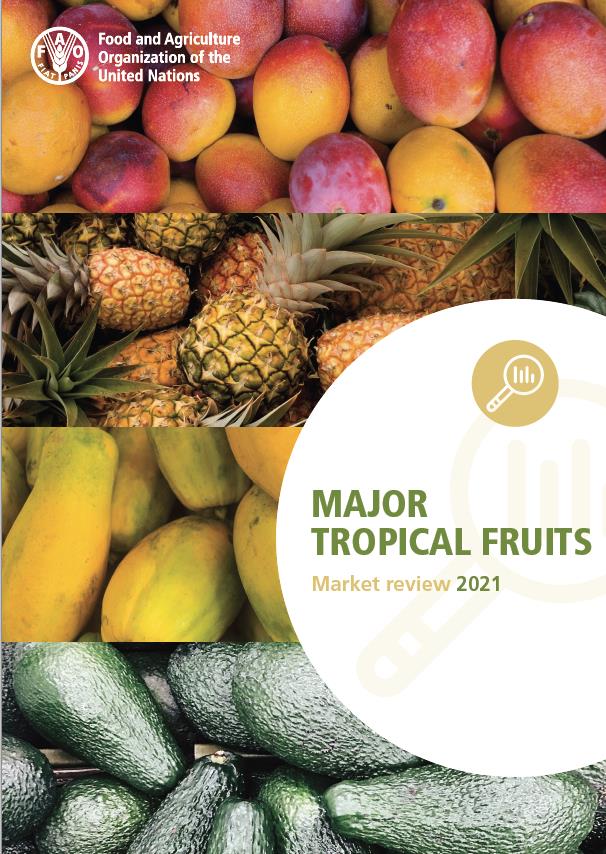
Major Tropical Fruits - Market Review 2021
13/09/2022
This report describes full-year results on developments in global major tropical fruits trade in 2021 and represents an update to the Major Tropical Fruits Market Preliminary Results 2021.
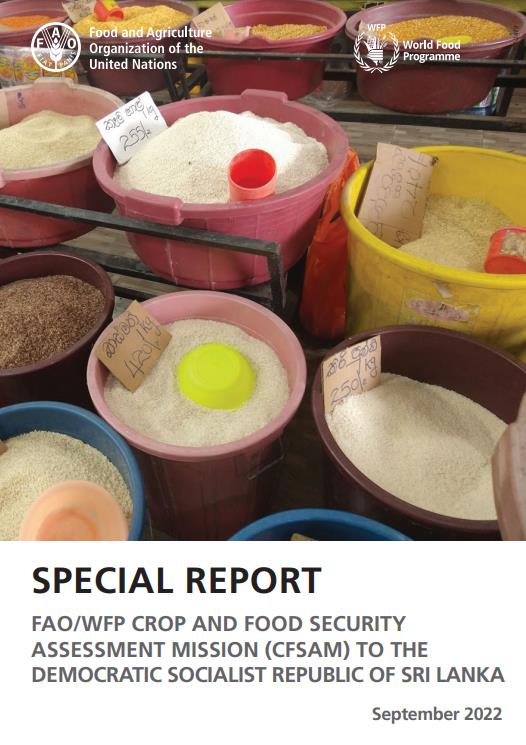
Special Report – FAO/WFP Crop and Food Security Assessment Mission (CFSAM) to the Democratic Socialist Republic of Sri Lanka
12/09/2022
At the request of the Government of Sri Lanka, a joint FAO/WFP Crop and Food Security Assessment Mission (CFSAM) took place in June and July 2022 to analyse the country’s agricultural production in 2022, particularly of the main staple cereals, and to assess households’ food security conditions. The request was prompted by expectations of a well below agricultural output in 2022, owing to the effects of the severe macroeconomic crisis, which also pushed up food prices to record or near-record levels. This caused a significant worsening of households’ food security.
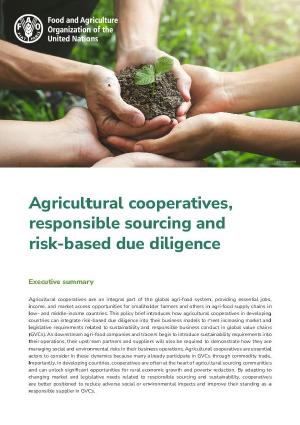
Agricultural cooperatives, responsible sourcing and risk-based due diligence
08/09/2022
The objective of this technical paper is to consider how agricultural cooperatives in developing and transitional economies can help reduce adverse environmental, social and development impacts in global agricultural value chains (GVCs), including through risk-based due diligence.

